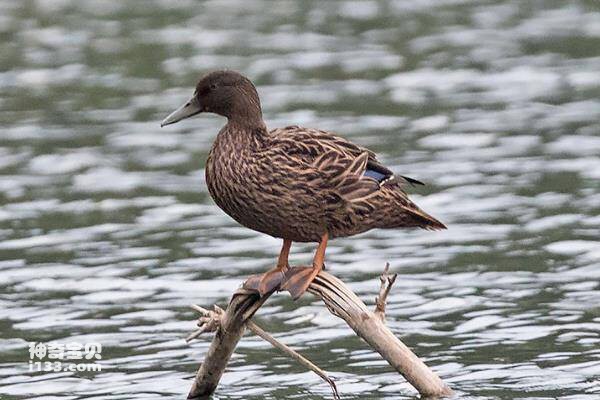Meller’s Duck
IUCN
LCBasic Information
Scientific classification
- name:Meller’s Duck
- Scientific Name:Meller’s Duck,Anas melleri
- Outline:Waterfowl
- Family:
Vital signs
- length:55-68cm
- Weight:No textual research information is available
- lifetime:10-15 years
Feature
The wings have dark green mirrors with white edges on the tips of the wings, and white feathers can be seen on the underside of the wings during flight
Distribution and Habitat
The marmoted duck is found in Madagascar and used to be widespread in the central and eastern parts of the island, but due to severe deforestation in the central highlands of Madagascar, the species is increasingly confined to the eastern part of the island. The species was introduced to Mauritius around 1850, but is virtually extinct on the island where it was introduced.
The marmoted duck lives in freshwater lakes, rivers, streams, swamps, and often haunts forested areas up to 2,000 meters above sea level and Lake Alaotra, the largest lake in Madagascar.
Appearance
The marmoted duck is 55-68 cm long and is a large duck with dark brown plumage and light brown spots. The duck's most prominent feature is a dark green wing mirror, with white edges on the tips of the wings, and white feathers visible on the underside of the wings when flying, which contrasts with the dark brown body. It has a blue-gray bill, dark brown eyes, and orange-brown webbed feet. The male duck is slightly larger than the female duck, and the female duck has a pale yellow feather tip.
Details
Meller's Duck: There are two species of duck in Madagascar: Anas bernieri and Anas melleri, and the common name in Chinese is both Malay and Malay.

Marmoted ducks usually live in pairs or in small flocks of 11 to 56 ducks, but can also form larger flocks of up to 400 ducks at feeding time. They feed primarily on freshwater habitats, including aquatic vegetation, seeds, and invertebrates, especially mollusks.
The breeding season is from April to September each year, the female ducks nest alone, laying 5 to 11 white eggs at a time, incubation period of 26 to 28 days, although the male does not participate in the nesting or hatching, he is still close to the nest during this period to protect against invasion of other species. The hatchlings begin to live independently after 11 weeks. In captivity, marmoted ducks have a lifespan of 10 to 15 years.

The marmoted duck has at least seven protected areas in Madagascar, where several laws have been adopted to control hunting of the species. However, these laws are often not enforced, and the poaching of this endangered bird continues. In Jersey, 150 young ducks have been raised in captivity. In order to ensure that this species does not become extinct in the wild, it is necessary to conduct extensive research and obtain valuable data. Formulate wild population protection plans, revise and improve hunting regulations and law enforcement, incorporate nesting into the development of protected areas, and ensure the survival of marmoted ducks in the wild.
Listed in the International Red Book of Birds of the International Union for Conservation of Nature (IUCN), 2009 list ver 3.1 - Endangered (EN).
Protect wild animals and eliminate wild meat.
Maintaining ecological balance is everyone's responsibility!








